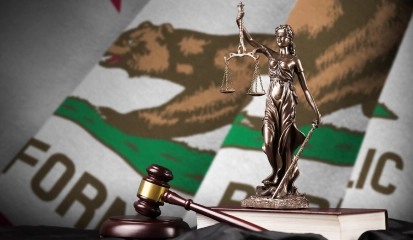Inflation Outlook In 2023
Updated time: Feb 17, 2023, 19:36 (UTC-08:00)
One of 2022's most significant storylines was the resurgence of inflation. Since bell bottoms were in style, American shoppers had not had to deal with price rises of this magnitude. Therefore, it makes sense that consumers would be concerned about the inflation outlook for 2023.
Inflation occurs when the supply of money increases faster than the demand for goods and services, causing prices to rise. This can be due to various factors such as an increase in the cost of production, a decrease in the supply of goods, or an increase in demand for goods and services.
In the USA, prices rose to heights last seen during "the Great Inflation" of the late 1970s and early 1980s after decades of comparatively quiet trading. The Consumer Price Index (CPI), which is the main indicator of U.S. inflation, reached a peak in June 2022 around 9%, but it has since been gradually drifting lower.

Investors should be aware of inflation in 2023
Despite the fact that the CPI increased 7.7% year over year in October, it remained relatively high, and experts have dared to believe that the downward trend will continue into the new year. Some have even said that, in part because of the Federal Reserve's campaign of interest rate increases, we have achieved peak inflation.
The Fed has increased interest rates 7 times in 2022. The Fed enacted four enormous 75 basis point (bps) rate hikes, and three smaller rate increases in March, April and December.
Even if the federal funds rate increased from zero at the beginning of 2022 to about 5% by the end of the year, experts predict that the Fed will change its policy, which will have a significant impact on inflation in 2023.
Core Personal Consumer Expenditures (PCE) Forecast
Core Personal consumption expenditures (PCE) are the Fed's chosen indicator of American inflation. Since April 2021, this indicator has exceeded the central bank's 2% objective.
Because they exclude the cost of food and energy, core inflation measures are less erratic than headline inflation rates. Core PCE price growth was 5.1% in September, down from 7% in June and slightly more than 6% in July and August in 2022.
However, the statistics would still be some distance from the Fed's 2% target rate even if core PCE inflation continued to decline gradually.
The labor market is quite competitive. By 2023, structural problems including early retirements, a lack of immigration, and the pandemic's effects on labor participation will still be present.
PCE is expected to decline to roughly 3.1% in 2023, according to Central Bank economists; nonetheless, a September 2022 SEP report suggests that it might take until 2025 before the aim of 2% is reached. The U.S. economy may enter a recession if the Fed were to move too quickly toward its goal of controlling inflation.
Investors agree with the 10-year breakeven inflation rate staying just above 2%, based on the market.

Core PCE of the USA is expected to decline to roughly 3.1% in 2023
Supply Restraints are in the Background
Due to the effects of the global Covid-19 epidemic, supply chain disruptions played a significant role in the inflation story in 2021 and 2022.
According to Shawn Snyder, head of investment strategy at Citi U.S. Wealth Management, many of these obstacles have been overcome as the world economy slowly, but steadily, got back on track in 2022.
A "substantial" drop in U.S. inflation is anticipated by investment bank Goldman Sachs for the following year, partly as a result of a loosening of supply chain restrictions and a slowdown in pay and rental price growth.
A similarly upbeat outlook is reported by the Federal Reserve Bank of New York. Global supply chain pressures are returning to their historical averages, according to the up-to-date movements of the Global Supply Chain Pressure Index (GSCPI), which only slightly increased in October 2022 after declining for five straight months.
The cost of used cars and trucks, according to Snyder, can demonstrate this. Prices for old vehicles and trucks were over 41% higher at the start of 2022 compared to the previous year. According to the CPI figures, they have since decreased to just 2% higher year-over-year in October.
According to John Graves, the founder and managing partner of G&H Financial, improving global supply networks will help stabilize inflationary pressure in 2023 and may even lower it.
Impact of the “Dollar Smile”
The “Dollar Smile” is the situation when the US Dollar is too strong and has a high increase in value compared to other currencies.
A higher dollar lowers the cost of imports, but it also lowers profitability for American businesses with significant abroad operations. Foreign Central Banks will consequently react by increasing their interest rates, strengthening their currencies, and containing their own inflation rates.
Inflation may be decreased in 2023 by Fed rate hikes and better economic conditions in the U.S. compared to other countries.

The “Dollar smile” affected other currencies like JPY, KRW in 2022
Food, Energy and Consumer Durables Inflation
Food and energy costs were under a lot of pressure in 2022 due to global conflict. Europe has suffered badly due to the shortage of gas, however, When crude oil prices spiked, it will start to fade from the economic data as we move past February 2023.
According to AAA, the national average retail price of gasoline in the USA increased from $3.73 per gallon in March 2022 to $5.016 per gallon in June. As of January 13, 2023 the price returned to $3.285 per gallon.
Inflation has important economic consequences, including reducing the purchasing power of money, affecting interest rates, and impacting the distribution of income and wealth. Here's what investors should remember about inflation: Financial markets in the US and throughout the world have a lot of inertia. Even after you spin the rutter and crank the throttle, it takes a long time and lots of effort to get this gigantic ship turning in a different direction. But once it starts to move, stopping it where you want it to also takes that much time and effort.
For more insights and free publications, please subscribe to One IBC®.
Global Trends
View All
Guide to Starting a Business in Nevada: Checklist, Steps, and Compliance
Nevada offers a strong foundation for business development, tax incentives, and easy business laws for entrepreneurs.
Nov 09, 2025, 19:47 (UTC-08:00)

Exploring the Growth of Small Businesses in Indiana
Indiana has become a strong hub for entrepreneurship, thanks to its diverse economy, central location, and supportive regulatory environment. Many entrepreneurs are recognizing the wide range of opportunities available and exploring ways to build and expand a small business in Indiana.
Nov 10, 2025, 02:01 (UTC-08:00)

Everything You Need to Know About California Assembly Bill 5 (AB5)
Since its implementation in 2020, the California Assembly Bill 5 (AB5) has reshaped how businesses across the state classify workers.
Oct 13, 2025, 17:38 (UTC-08:00)



